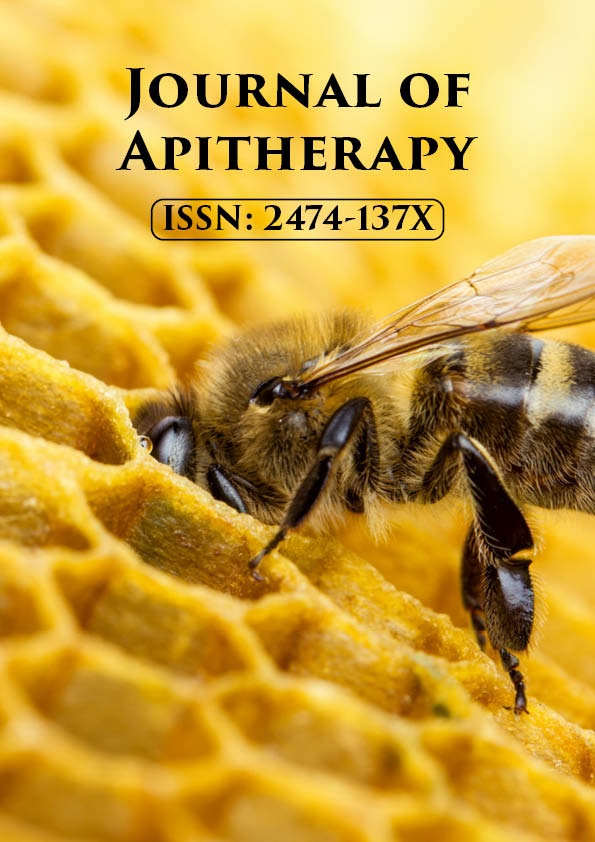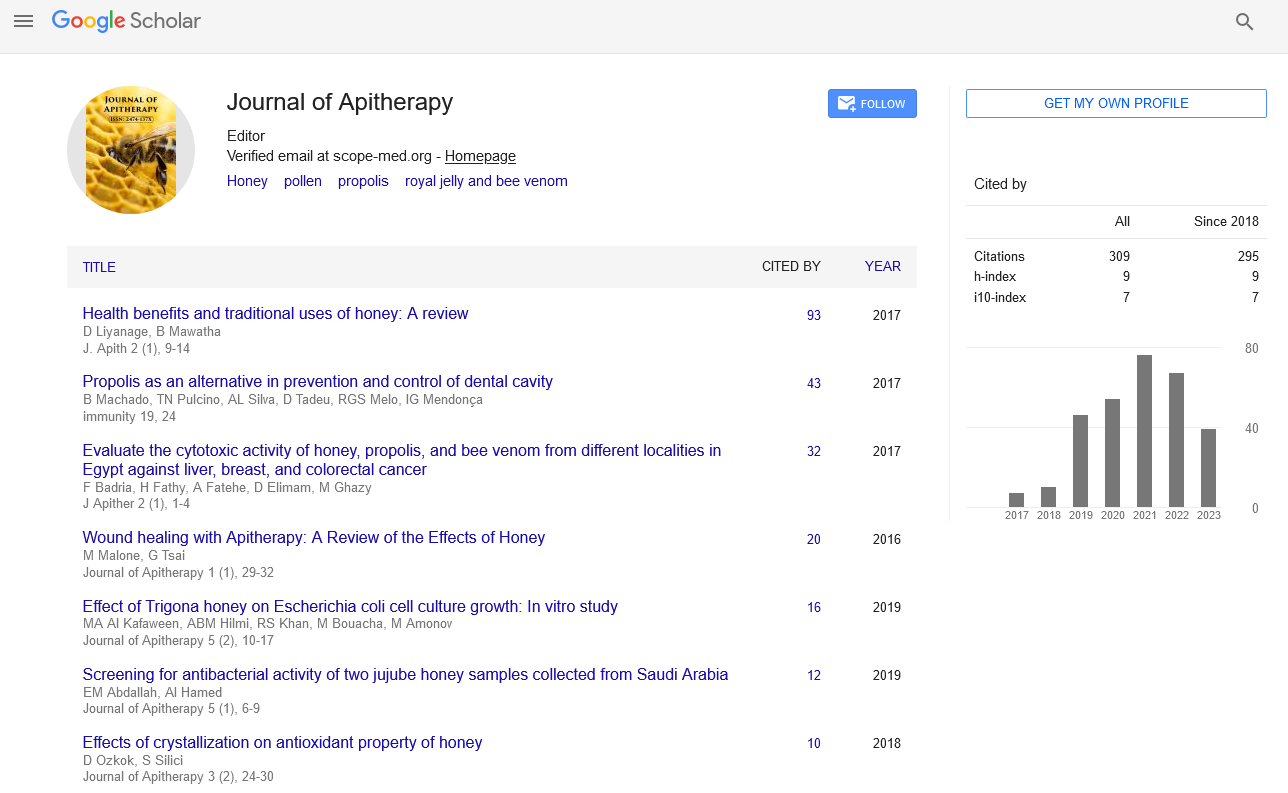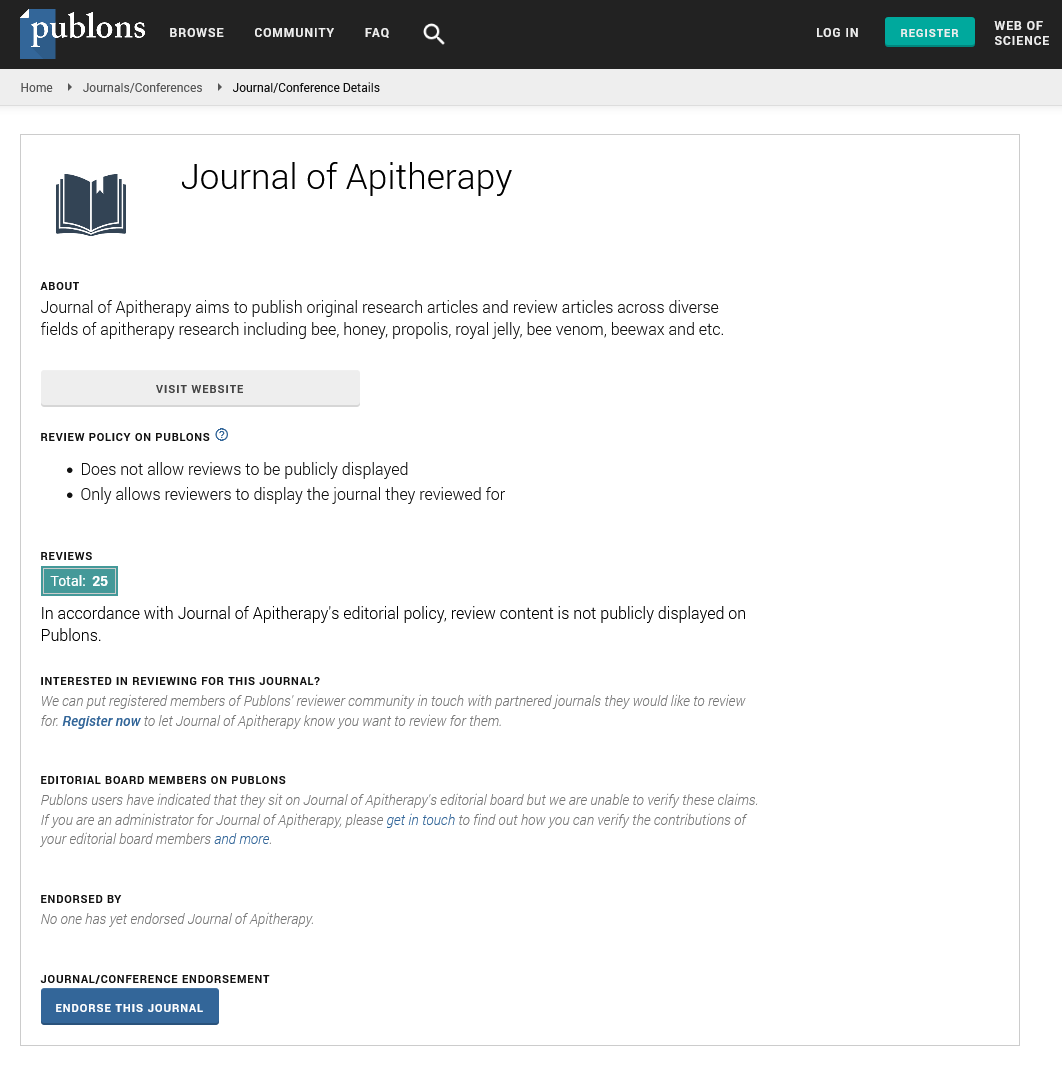Commentary - Journal of Apitherapy (2022)
Honey Plays Main Key Role in Health and Skin, anticancer
Kasie Raymann*Kasie Raymann, Department of Integrative Biology, University of Texas, Austin, USA, Email: Kasieraymann@gmail.com
Received: 04-Feb-2022, Manuscript No. JAPITHERPAY-22-54607;; Editor assigned: 07-Feb-2022, Pre QC No. JAPITHERPAY-22-54607 (PQ);; Reviewed: 22-Feb-2022, QC No. JAPITHERPAY-22-54607;; Revised: 28-Feb-2022, Manuscript No. JAPITHERPAY-22-54607 (R).; Published: 07-Mar-2022
Description
Honey is a natural ingredient that has been used for medicinal purposes since ancient times. Because of the significant antioxidant and anti-inflammatory characteristics of flavonoids and phenolic acids, they play an important role in human health. Honey has antibacterial and anticancer properties against a variety of malignancies, working on a variety of molecular pathways involved in cellular proliferation. In addition, the reduction of glucose, fructosamine, and glycosylated haemoglobin serum concentrations has been emphasised as an antidiabetic activity. Honey also protects the cardiovascular system by preventing the oxidation of low-density lipoproteins, the neurological system, and the respiratory system by preventing asthma and bacterial infections, and the gastrointestinal system. The importance of the gut microbiota in animal health is becoming more apparent. Honey bees, unlike most other insects, have a highly preserved and specialised core gut microbiome, which is made up of nine bacterial species and acquired primarily through social transmission. Five of these species are found in both honey bees and bumble bees and are prevalent in honey bees. The gut microbiome of bees has been demonstrated to play a role in metabolism, immunological function, growth and development, and pathogen defence in recent studies. Natural medicine is becoming more popular among both the general public and the nursing profession. These therapies, also known as unconventional, alternative, and complementary therapies, are often obtained from natural sources and aid in the development of health and well-being by assisting the body’s natural healing processes. Although the use of natural therapies in wound care is still in its infancy, a number of them-honey, larvae therapy, aroma therapy, herbal medicine, homoeopathy, nutrition, and others have shown promise. Natural products such as honey, propolis, bee pollen, bee bread, royal jelly, beeswax, and bee venom have been employed in medicine since ancient times. Natural bee products can now be utilised for skin treatment and care, according to studies. The flavonoids in these products, including as chrysin, apigenin, kaempferol, quercetin, galangin, pinocembrin, and naringenin, are responsible for their biological qualities. There have been several reports on the pharmacological actions of phenolic acids and flavonoids, as well as 10-hydroxy-trans-2-decenoic acid, which is found in royal jelly honey, is an excellent wound and burn dressing, and it has also been used in the treatment of pityriasis, tinea, seborrhea, dandruff, diaper dermatitis, psoriasis, haemorrhoids, and anal fissure. It has emollient, humectant, calming, and hair conditioning properties in cosmetic compositions, keeps the skin young and prevents wrinkle formation, regulates pH, and prevents pathogen infections. Lip ointments, cleaning milks, moisturising creams, after sun, tonic lotions, shampoos, and conditioners are all honey-based cosmetics. The proportions employed range from 1% to 10%, however combination with oils, gels, and emulsifiers, as well as polymer entrapment, can achieve concentrations of up to 70%. Honeys that are intermediate in moisture, dried, or chemically changed are also used. Botanical sources have deeply conditioned mechanisms of action on skin cells, which include antioxidant activity, Honeys from all over the world exhibit powerful microbicidal activity against dermatologically relevant bacteria, according to a slew of in vitro research. Honey has also been demonstrated to lower bacteria pathogenicity and reverse antibiotic resistance in vitro investigations.
Copyright: © 2022 The Authors. This is an open access article under the terms of the Creative Commons Attribution NonCommercial ShareAlike 4.0 (https://creativecommons.org/licenses/by-nc-sa/4.0/). This is an open access article distributed under the terms of the Creative Commons Attribution License, which permits unrestricted use, distribution, and reproduction in any medium, provided the original work is properly cited.







